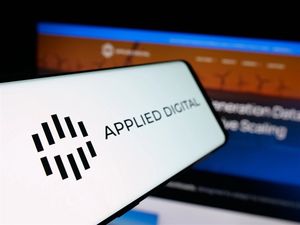What the brands you love are doing to keep your data safe
(BPT) - Nearly one in four people recently shared they would rather give up chocolate for the rest of their lives than be subjected to digital fraud. Unfortunately, fraud is on the rise, with three in ten consumers sharing that they have experienced fraud in the past three years, according to new research from Telesign. Of those surveyed, 61% reported financial losses and 40% said the stress of the experience impacted their daily lives and changed their expectations of digital interactions.
With fraud losses at an all-time high, 94% of consumers agree that businesses bear the responsibility for protecting their digital privacy. In fact, 43% of those whose personal information was exposed due to a data breach stopped associating with the company that failed to protect their data. The effect of a bad actor is not limited to the original consumer, as 44% of those reported telling friends and family not to associate with the brand, while 30% posted about the fraudulent incident on social media.
Despite the prevalence and consequences of digital fraud, consumers sometimes push back on some common fraud prevention measures. Approximately 70% of online shopping carts are abandoned before checkout, and the most cited reason is the friction created when customers are asked to verify their identities.
Think of friction in the digital economy as anything that gets in the way of someone's digital or online experience. Consider your own digital accounts for a moment. When you sign up for a new app or service, your interest probably wanes, or you become distracted when you encounter a burdensome registration or sign-up process. And if you've decided to jump through all the proverbial safety hoops, you've likely asked yourself, 'why is this necessary?' before completing the transaction.
Most consumers have grown accustomed to some level of friction even if they don't fully understand the purpose it serves. Friction adds an additional layer of protection by making it more difficult for malicious actors to gain access to your account or personal data.
But not all friction is bad. Appropriate friction is a new term being embraced in the digital economy, partly because research is showing that the right amount of friction can enhance the user experience. Further, it can actually build trust. Appropriate friction can make consumers more trusting of a brand's digital app or service, boost loyalty, and enhance the desire to do business with that brand.
But what does appropriate friction look like? And how can consumers spot the brands employing it to keep their identity and data safe?
For digital users, the good news is that appropriate friction doesn't have to be all that, well, frictional. And for businesses, defending against fraud doesn't have to come at the cost of a smooth user experience. Take the sign-up or onboarding process, for example.
Onboarding is the process of subscribing or signing up a new user to a digital platform and is a crucial first step in the relationship between a consumer and a brand.
The experience should be designed for ease but also to minimize fraudulent activity and prevent bots from infiltrating your digital accounts. Done poorly, onboarding is frustrating and can drive away potential users. Done well, it establishes trust by verifying your identity and providing access to the platform while reinforcing the assurance of safety and respect for your personal information.
Consumers look for brands that offer a streamlined yet effective digital experience. This is particularly true with digital services like online banking and finance, e-commerce, or gaming. A little more friction in these moments may look like one-time password requests or two-factor authentication. These are good signs of appropriate friction designed to keep your information safe. It can also prevent children from accessing parental accounts and racking up unwanted charges or viewing content that is not age-appropriate.
Deciding whom you can trust in the digital world can be difficult. The most trusted brands are the ones striking the right balance - providing the right amount of appropriate friction at the right time in the short term to build the kind of trust that creates lasting relationships in the long term.
More News
View More



Recent Quotes
View More
Quotes delayed at least 20 minutes.
By accessing this page, you agree to the Privacy Policy and Terms Of Service.